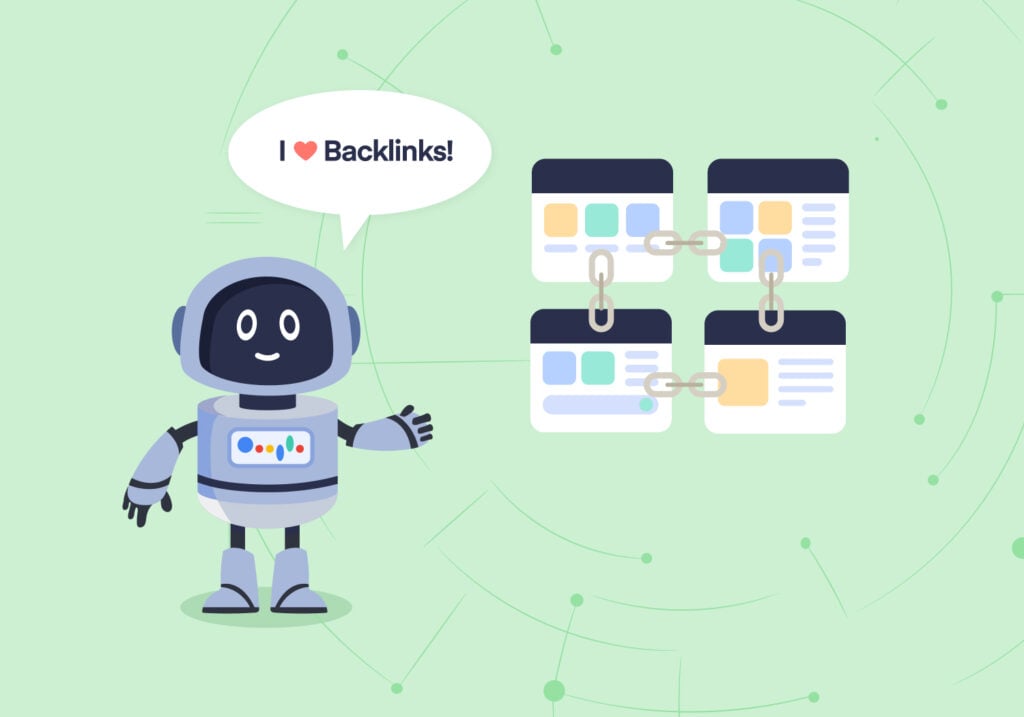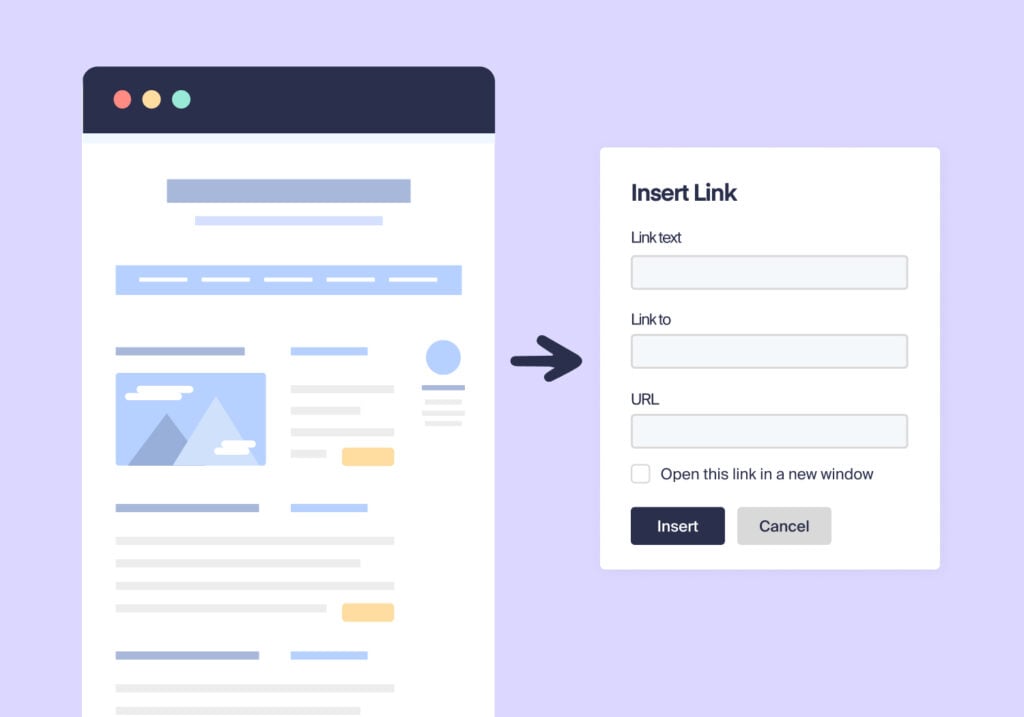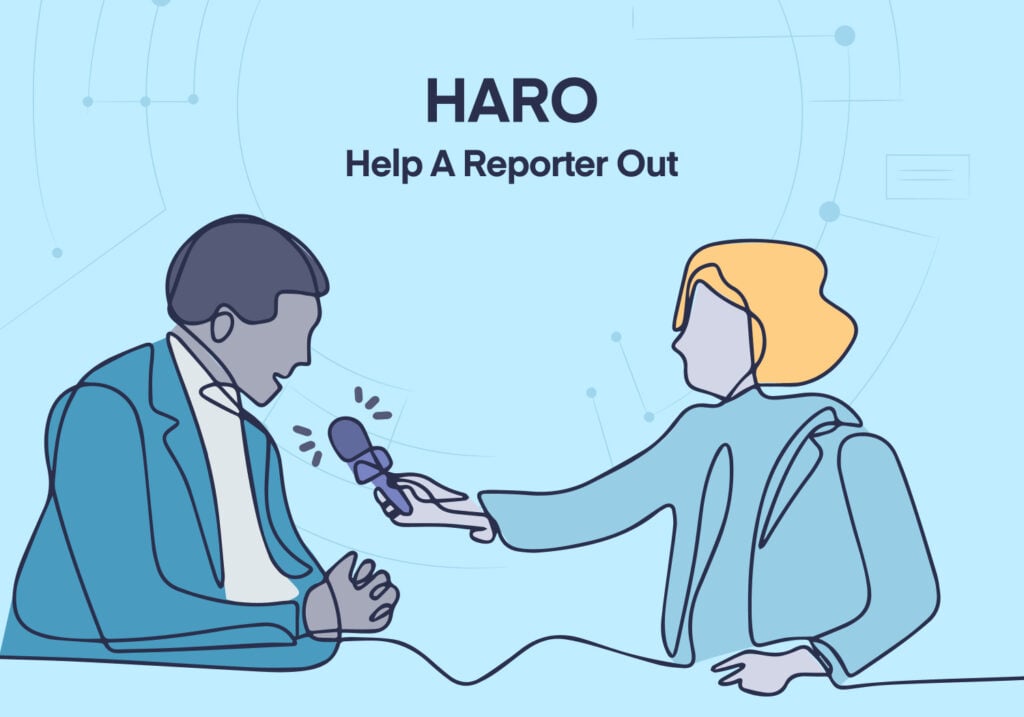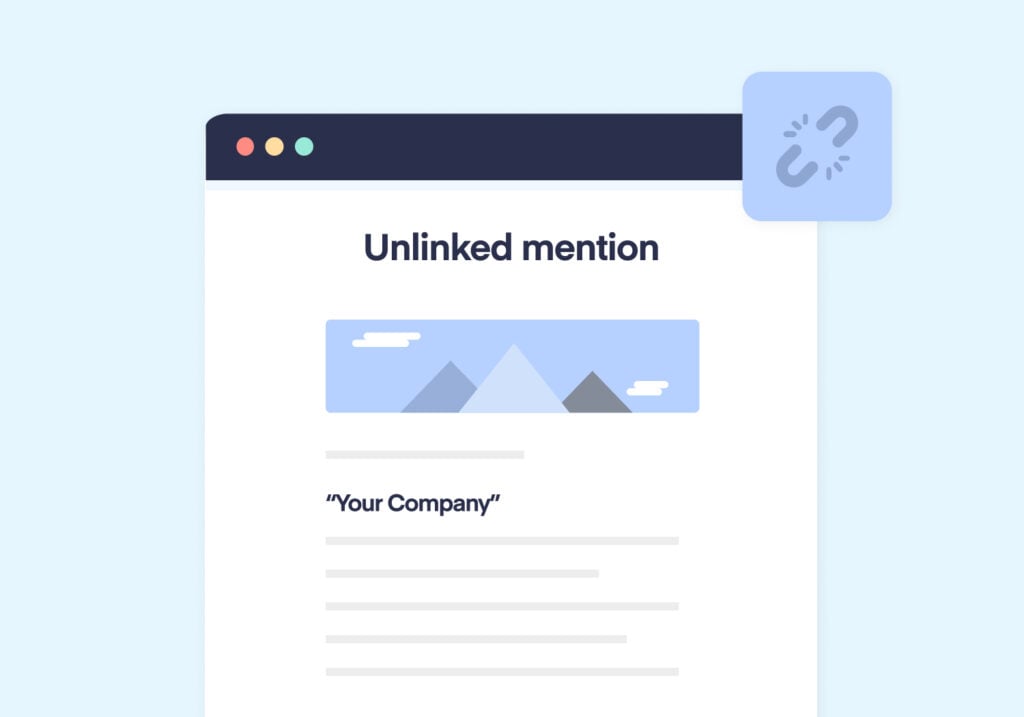
This is a guest post from Gert Kulla, founder of Batlinks.io.
If you’re reading this article, you’re most likely looking to grow your own business and expand your horizons to reach as much of your potential sales funnel as possible.
And that’s all good and well, but how do you get to the point where you can invest time and energy into a marketing campaign that doesn’t fall flat as soon as you cancel your monthly debit order?
That’s the magic of SEO.
Even if you set up an SEO campaign for only 6 months and didn’t touch it again, you’d continue to see growth. And one of the elements of SEO that will have the greatest impact on your search rankings has, and will probably always be backlinks.
Why Is Backlinking Important?
Well, incoming links serve a dual purpose.
Firstly, it tells Search Engines that you’re relevant. It’s like a tap on the back from a friend, acknowledging your work and giving you that boost you need. Backlinks come in different forms, with tags differentiating between them.
Those tags tell algorithms what the links are really for. Amongst other things, they allow ranking power to cross from a linking site to your pages. They also tell search engines what to think of the content they're pointing toward - so they carry a lot of power.
Here’s an example of how they’re able to do that:
A "dofollow" link, indicated by the absence of a "nofollow" attribute, allows search engines to follow the link and pass on authority from the source page to the linked page. These links contribute to the linked page's relevance and popularity in search engine rankings.
On the other hand, a "nofollow" link explicitly instructs search engines not to follow the link, making it useful for user-generated content or situations where the site owner doesn't want to endorse or pass authority to the linked page, such as with sponsored links
Besides these two attributes, there are a whole bucket load of other tags that are attached to HTML links that also carry a lot of meaning, but perhaps that’s an explanation for another day…
Secondly, and probably more importantly, backlinks expose your website to a wider audience.
If your website gains a backlink from another site within the same niche as yours, it will allow the readers of that site to simply click on the hyperlink (usually highlighted in blue) and continue to one of your web pages.
This exposure can translate to more followers, sales, clicks, and views - you get the idea.
Are Backlinks Still Relevant?

Yep, backlinks are still very relevant, no matter which way you look at them.
They remain one of the main signals of ranking. This makes a good quality link in a competitive niche, like eCommerce, invaluable. We know this because Google’s Search Essentials (formerly known as Google’s Webmaster Guidelines) have repeatedly hinted at their importance throughout the years.
The fact that links come up in SEO circles and are a topic for conversation among some of the heavy hitters at Google is probably enough reason to convince anyone that links matter.
However, one thing is clear. It’s not the number of links that matter. It’s the quality of those links that make a difference. John Mueller once said:
“Or there could be one really good link from one website out there that is, for us, a really important sign that we should treat this website as something that is relevant because it has that one link. I don’t know, maybe from like a big news site’s home page, for example. So the total number essentially is completely irrelevant.” (1)
So, before you consider building an inbound (or backlink) from another website, consider the quality of the link you’re building. Low-quality links are easy to come by. They’re a dime a dozen and are ‘sold’ or traded as regularly as potatoes at a farmers market.
If Google determines that the inbound link stems from a website that is not only relevant but also ranks for the same search query as your target keyword, it will be way more likely to carry more weight, as Google views this link as an extension of the search result.
So, how do you build these effective, high-quality backlinks? We’ve put together a short list of effective strategies that most marketers use today.
Strategies That Work In 2024 - In Order Of Effectiveness
Here’s a breakdown of the top 7 link-building strategies that any marketer or business owner can employ on their own.
Along with each strategy, we’ll try to answer the following three questions:
- Why is it a relevant strategy?
- What will I gain by using this strategy?
- How do I do it?
#1 Guest Posts
Guest posts are a go-to strategy for most marketers.
They allow you to pick some of the most important sites (from your business’s viewpoint) to feature on as an expert. Guest posts are relevant as most legitimate websites today want to hear from professionals. They want someone to quote or give clarification on intricate matters.
What you gain is not only the backlink but also the opportunity to build a name and a brand for yourself in the industry. People trust names that they’ve heard over and over again, and that makes them more confident to buy, well, whatever you’re selling.
Here’s a simplified way of going about it:
Identify Target Websites: The first step is identifying websites or blogs that align with your niche or industry. These should be reputable sites with an audience that you want to reach.
Research and Pitch: Next, research the target websites thoroughly, understanding their content, audience, and guidelines for guest posts. Then, you can craft a compelling pitch to the website owner or editor, proposing a topic and explaining why they would be a valuable contributor.
Create High-Quality Content: Once the pitch is accepted, you must create high-quality, engaging content that meets the website's editorial standards.
This content should provide value to the website's audience and include relevant keywords and links back to your website. Always edit and proofread the content carefully to ensure it's error-free and well-structured.
The goal is to make a positive impression on the website's audience.
Submit for Review: Submit the content to the website's editor or content manager for review. They may need to make revisions based on feedback.
Promote the Guest Post: After the guest post is published, you should take the opportunity to actively promote it through your own social media channels, email list, and other marketing channels to maximize its reach.
True, there’s a lot that goes into guest posting. And if you’re interested in the relevance of this specific strategy, here’s a more in-depth discussion on Guest Posts.
#2 Link Insertions

Coming in at number two, but equally as effective as guest posts are link inserts.
They’re the bread and butter for many link-building experts. Why? Because they work. As simple as that.
A link insertion is simply when a website owner agrees to insert a hyperlink into an existing article that has been placed on his website, pointing toward your site. There’s no need to create a fresh article here as the content has already been written and posted.
You stand to gain a good ROI from this strategy because although it takes time to find sites that are relevant and will accept link inserts, you don’t have to spend added time to come up with a guest post.
The content has already been written, and it’s already ranking for a desired keyword. All you need to do is make sure that the article aligns with your vision, and if it does, approach the website owner for the link insertion.
Here’s how to do it:
Identify Target Sites: Start by identifying websites in your niche or industry that are suitable for link insertions. Ensure they have content relevant to your own.
Admittedly, this can be trickier than you think.
Begin with a Google search using relevant keywords or phrases related to your niche or industry. Then look for websites and articles on the first page of search results.
Alternatively, analyze your competitors' backlinks. Tools like Ahrefs or SEMrush can help you identify websites linking to your competitors. These sites are often good targets that you can approach.
Research and Outreach: Thoroughly research the selected target sites. Understand their content, audience, and existing linking practices. Reach out to site owners or editors via email or contact forms with a personalized introduction.
Pitch the Insertion: In your outreach, pitch the idea of a link insertion. Suggest specific articles or pages on their site where your link would add value. Highlight why your content is relevant to their audience.
Offer Value: Emphasize the benefits of including your link.
Explain how it enhances their existing content, provides additional information to their readers, or improves the user experience. Make it clear that the link insertion is a win-win.
Negotiate and Confirm: Engage in negotiations regarding the terms of the link insertion, including the anchor text, placement within the content, and any associated fees. Once an agreement is reached, obtain written confirmation of the insertion details.
#3 Going After Your Competitor's Links
Going after your competitor's links might sound like something dodgy, but it’s far from it.
You’re simply finding an effective way of getting to the top of search results by studying what your closest competitors have done.
You already know that their backlinks matter - they are partially responsible for getting them to the top, after all.
So, how do you do it?
Identify Competitors: This might be obvious, but firstly, you need to identify your main competitors in your niche or industry. You can do this through a simple Google search or by using tools like SEMrush or Ahrefs.
Use Backlink Analysis Tools: Once you've identified your competitors, use backlink analysis tools like Ahrefs, SEMrush, or Moz's Link Explorer to gather information about their backlinks.
Enter your competitor's domain into the tool, and it will provide a list of websites linking to them.
There are quite a few tools that marketers and link builders use to great effect during a link-building campaign. Here’s a more comprehensive list of SEO tools you might be interested in using.
Analyze Backlinks: Examine the list of backlinks to identify the most relevant and high-quality ones. Look for websites with strong domain authority and relevance to your industry.
Pursue Backlinks: To pursue these backlinks, you have a few options. We’ve already touched on guest posts and link inserts, so here’s a little bonus strategy:
Create Better Content: If you find that your competitor's backlinks are directed to content that is outdated or lacks depth, create superior content on the same topic. Then, reach out to the linking sites and suggest they replace the old link with a link to your better resource.
#4 HARO

Haro is a strategy that gives you access to websites - and audiences - that you could only dream of otherwise.
Think Forbes Magazine, the New York Post, and MSN, to name a few.
These websites are relevant simply because they are giants in the online world. They reach massive audiences numbering into the millions and send serious signals to search algorithms that will have a real effect on your web search results.
So, how do you get in on the HARO action?
Sign Up: To get started with HARO, you need to register as a source on the HARO platform.
This involves providing their contact details, areas of expertise, and other relevant information. Once registered, they will start receiving daily email queries from journalists looking for expert opinions or insights.
Receive Queries: You’ll receive a steady stream of queries from journalists in your inbox. These queries cover a wide range of topics and industries. Make sure to review these queries regularly to identify those that align with your expertise and industry.
Respond Quickly: When a relevant query comes in, you must respond promptly.
Journalists work on tight deadlines, so a quick and concise response is appreciated. Provide valuable insights or information related to the query, showcasing your expertise and knowledge.
Get Featured: If a journalist selects your response for their article, you’ll be featured as a source in the article. This exposure can include a backlink to your website, which not only boosts your online visibility but also adds credibility to your expertise.
Keep in mind that even if you don’t get a backlink to your site, being featured on a website with great authority allows you to share the post on your social media. This exposure is still super valuable.
#5 3-Way Link Exchanges
You scratch my back and I’ll scratch yours is probably the easiest and most condensed way of explaining what a three-way exchange is.
Except that you now have three websites scratching each other's back - as odd as that sounds.
With a 3-way exchange, you have three websites all agreeing to link to one another, with the idea that those outbound links will boost the other's ranking and expose that site to a broader audience.
These link exchanges do work.
We know that because Google has in recent times, penalized sites that do a two-way exchange. They wouldn’t go out of their way to penalize a link exchange if they didn’t work anyway.
And the reason why we recommend a three-way exchange is specifically to protect both websites from penalties. While a tit-for-tat exchange is traceable, a three-way exchange is not so much. You need to be sure not to overuse this method, but it does work.
So, how do you do it?
Identify Potential Partners: Imagine you're a marketer in the fitness industry, and you want to boost the SEO of your fitness blog.
You identify two potential partners: Partner A, a nutrition blog, and Partner B, a sports equipment e-commerce site. Both partners are relevant to your niche.
Contact Prospective Partners: You reach out to Partner A and Partner B via email, introducing yourself and explaining the benefits of a three-way link exchange. In your email, you propose the following exchange:
- You will link to a relevant article on Partner A's nutrition blog.
- Partner A will link to a useful product page on Partner B's sports equipment site.
- Partner B will link back to a valuable post on your fitness blog.
Negotiate Terms: Both partners express interest, and you negotiate the details:
- You agree to link to Partner A's article titled "Healthy Eating Tips" from one of your blog posts.
- Partner A will link to Partner B's "Best Home Gym Equipment" product page.
- Partner B will link back to your post on "Effective At-Home Workouts."
Execute the Exchange: You and your partners implement the links as agreed. You update your blog post to include a link to Partner A's article, and Partner A adds a link to Partner B's product page. Simultaneously, Partner B includes a link to your fitness blog post.
Expand Your Network: Seeing the positive results, you decide to identify and approach more partners in the fitness and health industry for additional three-way link exchanges, further boosting your website's SEO and online visibility.
This simple example demonstrates how a marketer can implement a three-way link exchange strategy to enhance their website's SEO by collaborating with relevant partners in their niche.
#6 Unclaimed Mentions

Unlinked mentions are only a method I would recommend if you have a brand that already has some awareness.
If you’re brand new and at the very start of your business career, there wouldn’t naturally be many sites that have mentioned you on the web. But if you’ve been around for a while, and especially if you have been utilizing social media to your advantage, I’d say that looking for unlinked brand mentions is worth the time and effort you put in.
It’s relevant to you as the sites that have bothered mentioning your brand or product have already shown interest in you. They simply haven’t made the effort to link to you yet.
Reaching out to them with a simple request of “Hi, my name is so and so, the name behind this company. I noticed that you mentioned my product on this page and I’d appreciate a link insert” is, after all, not a lot of effort.
So, how do you find unlinked mentions?
There are a few ways you could try to find these sites, but the easiest way of doing it is probably using the manual search function on Google. Sure, there are link-checking tools like Ahrefs and Moz that can also help with this, but a manual search on Google is completely free.
Here’s how to do it:
Open your web browser, and in the search bar, type your brand name enclosed in quotation marks. For example, if your brand is called XYZ Tech, type: "XYZ Tech".
Using quotation marks ensures that Google searches for the exact phrase and not individual words.
Now, Review Search Results: Press the "Enter" key or click the Google search button. Google will display a list of search results that include your brand name.
Identify Unlinked Brand Mentions: Now, carefully review the search results. Look for mentions of your brand that do not have an accompanying link to your website. These may be in the form of text mentions or references within articles, blog posts, forum discussions, or other online content.
When you find an unlinked brand mention, click on it to visit the webpage where it appears. Make sure it's a legitimate and relevant mention of your brand.
Contact the Website Owner or Author: If you've confirmed an unlinked brand mention, look for contact information on the website. This could be in the form of an email address or a contact form.
Reach out to the website owner or author, politely mentioning the unlinked mention (as I mentioned earlier), and request that they add a link to your website for proper attribution.
#7 Digital PR
Digital PR is a hit-or-miss strategy.
Hit, and you’ll probably hit it out of the park. Miss, the time and effort you put into your link-building campaign won’t mean much.
I say this because when you do Digital PR link building, you’re asking journalists to link to an article or other piece of content that you produced in the hopes that it goes viral and gets shared on news and social media sites alike.
With the digital world always evolving, it’s extremely difficult to keep up with the latest fads, news, and trends. So, while creating original content for journalists to link to could be explosive and gain you many worthwhile backlinks, the risk is that nobody would be interested in what you have to say.
This strategy is a high-risk, high-reward chance you take.
Digital PR is relevant and worthwhile because it not only helps improve your website's SEO but also enhances brand visibility, credibility, and authority. It offers a range of benefits that can contribute to long-term growth and success for your business in the digital landscape.
If you’re keen on trying it for yourself, simply follow these steps:
Identifying Newsworthy Content: The first step is to identify a topic or piece of content that is genuinely newsworthy and likely to grab the attention of journalists.
This could involve conducting original research, surveys, or studies to uncover unique data or insights within your industry or niche. The goal is to create content that stands out and has a strong news angle.
Creating Compelling Content: Once you have identified a newsworthy topic, create a high-quality article or piece of content around it.
This content should be well-researched, well-written, and presented in a format that is easy for journalists to understand and reference. Visual elements like infographics or charts can enhance the appeal of the content.
Pitching to Journalists: Develop a targeted list of journalists and media outlets that cover topics related to your content.
Craft a compelling pitch that outlines the key findings or insights from your article and explains why it is relevant and interesting to their audience. Personalize your pitches to each journalist and their publication.
Building Relationships: Building relationships with journalists is crucial in the Digital PR process.
Establish a rapport by engaging with their work on social media, attending relevant events or conferences, and responding promptly to their inquiries. A strong relationship can increase the chances of your pitches being accepted.
Top 2 Link-Building Best Practices
There you have it. 7 proven methods of building backlinks in 2024.
Whichever link-building method you choose to use, try to keep the following two best practices in mind, as they’ll help you build those quality links that search engines love while avoiding the quantity mentality that many link builders unfortunately have.
#1 Have A Sniper Mentality When Building Links
By ‘sniper mentality,’ I mean focusing your link-building efforts where they matter the most, not just randomly building backlinks for the sake of gaining backlinks.
Do this by first figuring out which pages need links to rank for a certain term that you’re targeting and how many would be sufficient.
Once that’s done, you can start building backlinks to those most profitable pages and expand your efforts from there.
This mindset means that you’d be focusing on one or two pages to begin with, increasing your likelihood of success.
#2 Focus Where The Highest Potential ROI Is
Begin by analyzing how many links you need to build, how much it will cost, and how much you stand to earn from ranking in the top 3.
Yep, landing in positions 1 - 3 of search results across all search engine platforms is highly lucrative.
Reports show that two-thirds of all clicks on search results go to the top 3 organic search results. (2)
This tells us that consumers generally bypass the paid ads at the top of results and don’t really bother scrolling down as far as results 7 or 8.
To put this into perspective -
Imagine that you're selling a smartphone, the "XYZ Smartphone,"
Presently, you're positioned in 10th place, garnering approximately 200 clicks per month out of a total of 10,000 monthly searches.
However, moving to the third position, where the click-through rate (CTR) averages around 10%, would propel your monthly clicks to about 1,000. Considering that the top three results capture a substantial 68.7% of all clicks on Google Search, this shift in ranking significantly boosts your visibility.
When it comes to revenue, assuming a 5% conversion rate and an average order value of $500 for the "XYZ Smartphone," your current monthly revenue stands at about $5,000. But with the enhanced click volume from the higher ranking, your monthly revenue could soar to around $25,000.
So, building links to pages that will give you the highest ROI (also known as your money pages) would make much more sense than random links to non-profitable pages.
To figure out which pages would potentially make you the most profit, simply ask an SEO professional for an audit of your site pages.
Conclusion
Organically ranking in search results is the gift that keeps on giving.
As we mentioned, the effects of ranking in the top three search results organically (or naturally) for a search will have lasting benefits for any business.
But admittedly, ranking organically takes time. And not all marketers have time on their side. They need results - now.
The perfect strategy then would be to incorporate a PPC campaign along with a link-building outreach campaign. PPC gives quick results, making your site visible to potential industry leaders and customers in the short term.
And as your small business continues to benefit from the link-building campaign, it will gain momentum until you eventually rank naturally for the search terms that are most valuable to you. This is the point that your small business becomes a fully fledged corporation and you start reaping the benefits of the hours of outreach.
For long-lasting results, remember to gain those backlinks naturally, playing by Google’s Search Central guidelines, and watch your business grow to its full potential.
Article Resources:
Book a WhatConverts demo to discover how you can track the ROI of all your SEO and PPC marketing efforts today.
Get a FREE presentation of WhatConverts
One of our marketing experts will give you a full presentation of how WhatConverts can help you grow your business.
Schedule a Demo
Grow your business with WhatConverts





